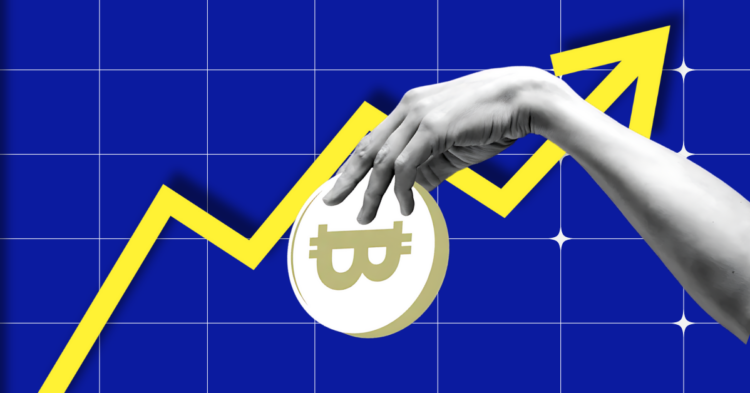Bitcoin, the world’s largest cryptocurrency by market capitalization, has skyrocketed to a one-month high of $64,661, sparking a wave of enthusiasm across the financial markets. This remarkable surge followed the Federal Reserve’s recent decision to slash interest rates, which has provided a significant boost to the market. Concurrently, the Japanese yen has continued to weaken, grappling with the implications of recent economic policies.
Bitcoin’s Rally Gains Momentum
Bitcoin has surged by 8.8% this week, marking its second consecutive week of gains. This upswing came on the heels of the Federal Reserve’s announcement of a substantial 50 basis point interest rate cut. Such a move is often seen as a catalyst for increased investment in assets like cryptocurrencies.
Chris Weston, a leading researcher at Pepperstone, highlighted that the prevailing economic conditions are highly favorable for Bitcoin’s upward momentum. He explained that once Bitcoin starts to rise, the fear of missing out (FOMO) often triggers more investors to jump in, further driving prices up.
Some analysts suggest that this rate cut could be indicative of a broader trend, with projections that rates might drop by an additional 125 basis points by the end of the year. However, Federal Reserve Chair Jerome Powell’s remarks about maintaining the Fed’s neutral rate higher than previous levels have somewhat tempered the exuberance in the crypto markets.
Ether, another major cryptocurrency, has also benefited from this rally, climbing 3% to $2,660.30—its highest price since late August.
Yen Weakens Further
In stark contrast to the rising cryptocurrency market, the Japanese yen has continued its downward trajectory. After reaching its highest level in two weeks, the yen stood at 144.16 against the U.S. dollar on Monday, extending its decline from the previous week. This downturn began when the Bank of Japan (BOJ) opted to keep its interest rates unchanged, displaying no urgency to raise them.
This decision came in the wake of the U.S. Federal Reserve’s rate cut, contributing to the yen’s ongoing slide. Although Japan’s financial markets were closed for Autumnal Equinox Day, global investors remained laser-focused on the potential for further rate cuts by the Fed. These anticipated cuts are expected to benefit equities and commodity-based currencies, as evidenced by the Australian dollar’s rise of 0.4% to $0.68355.
What Next?
The Federal Reserve’s actions appear to have alleviated fears of a U.S. recession. Analysts at Goldman Sachs predict that the U.S. dollar may experience a slight rise in the short term but could weaken again over the next six to twelve months.
As Bitcoin continues its upward trajectory, the pressing question is whether it can sustain this growth or if the ongoing struggles of the yen will have further repercussions on global markets. Investors and analysts alike will be closely monitoring these developments in the coming months.











